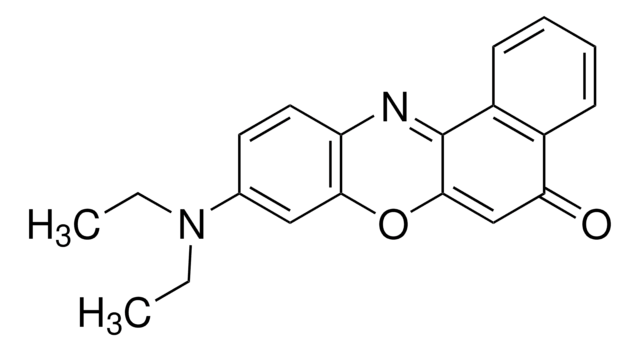1.01209
Sulfate d'ammonium
99.9999 Suprapur®
Synonyme(s) :
Mascagnite
About This Item
Produits recommandés
Qualité
for inorganic trace analysis
Niveau de qualité
Pression de vapeur
<1 Pa ( 25 °C)
Essai
99.9999%
Forme
solid
Puissance
2840 mg/kg LD50, oral (Rat)
pH
5 (100 g/L in H2O)
Pf
>280 °C (dec.) (lit.)
Solubilité
754-764 g/L
Densité
1.77 g/mL at 25 °C (lit.)
Masse volumique apparente
850 kg/m3
Température de stockage
2-30°C
Chaîne SMILES
N.N.OS(O)(=O)=O
InChI
1S/2H3N.H2O4S/c;;1-5(2,3)4/h2*1H3;(H2,1,2,3,4)
Clé InChI
BFNBIHQBYMNNAN-UHFFFAOYSA-N
Vous recherchez des produits similaires ? Visite Guide de comparaison des produits
Application
- Isolation and identification of milk-clotting proteases from Prinsepia utilis Royle and its application in cheese processing.: This study utilized ammonium sulfate for the isolation of milk-clotting proteases, which were then applied in cheese processing, enhancing the efficiency and quality of cheese production (Zhang et al., 2024).
- Diffusion-driven fed-batch fermentation in perforated ring flasks.: The research used ammonium sulfate in fed-batch fermentation processes to enhance microbial growth and product yield, demonstrating its utility in optimizing industrial fermentation techniques (Lüchtrath et al., 2024).
- Ammonium Sulfate to Modulate Crystallization for High-Performance Rigid and Flexible Perovskite Solar Cells.: This research investigates the role of ammonium sulfate in modulating the crystallization process of perovskite solar cells, significantly improving their performance and stability (Zou et al., 2024).
- Effectiveness of three nitrification inhibitors on mitigating trace gas emissions from different soil textures under surface and subsurface drip irrigation.: The study utilized ammonium sulfate in combination with nitrification inhibitors to reduce trace gas emissions in agricultural settings, highlighting its environmental benefits (Ribeiro et al., 2024).
Remarque sur l'analyse
Assay (acidimetric): ≥ 99.5 %
Chloride (Cl): ≤ 3 ppm
Nitrate (NO₃): ≤ 10 ppm
Phosphate (PO₄): ≤ 5 ppm
Ag (Silver): ≤ 0.010 ppm
Al (Aluminium): ≤ 0.050 ppm
Ba (Barium): ≤ 0.050 ppm
Be (Beryllium): ≤ 0.010 ppm
Bi (Bismuth): ≤ 0.050 ppm
Ca (Calcium): ≤ 0.100 ppm
Cd (Cadmium): ≤ 0.005 ppm
Co (Cobalt): ≤ 0.005 ppm
Cr (Chromium): ≤ 0.010 ppm
Cu (Copper): ≤ 0.005 ppm
Fe (Iron): ≤ 0.050 ppm
Ga (Gallium): ≤ 0.050 ppm
In (Indium): ≤ 0.050 ppm
K (Potassium): ≤ 0.100 ppm
Li (Lithium): ≤ 0.050 ppm
Mg (Magnesium): ≤ 0.010 ppm
Mn (Manganese): ≤ 0.010 ppm
Na (Sodium): ≤ 0.100 ppm
Ni (Nickel): ≤ 0.010 ppm
Pb (Lead): ≤ 0.005 ppm
Sr (Strontium): ≤ 0.010 ppm
Tl (Thallium): ≤ 0.005 ppm
Zn (Zinc): ≤ 0.010 ppm
Informations légales
Code de la classe de stockage
13 - Non Combustible Solids
Classe de danger pour l'eau (WGK)
WGK 1
Point d'éclair (°F)
Not applicable
Point d'éclair (°C)
Not applicable
Certificats d'analyse (COA)
Recherchez un Certificats d'analyse (COA) en saisissant le numéro de lot du produit. Les numéros de lot figurent sur l'étiquette du produit après les mots "Lot" ou "Batch".
Déjà en possession de ce produit ?
Retrouvez la documentation relative aux produits que vous avez récemment achetés dans la Bibliothèque de documents.
Les clients ont également consulté
Notre équipe de scientifiques dispose d'une expérience dans tous les secteurs de la recherche, notamment en sciences de la vie, science des matériaux, synthèse chimique, chromatographie, analyse et dans de nombreux autres domaines..
Contacter notre Service technique



